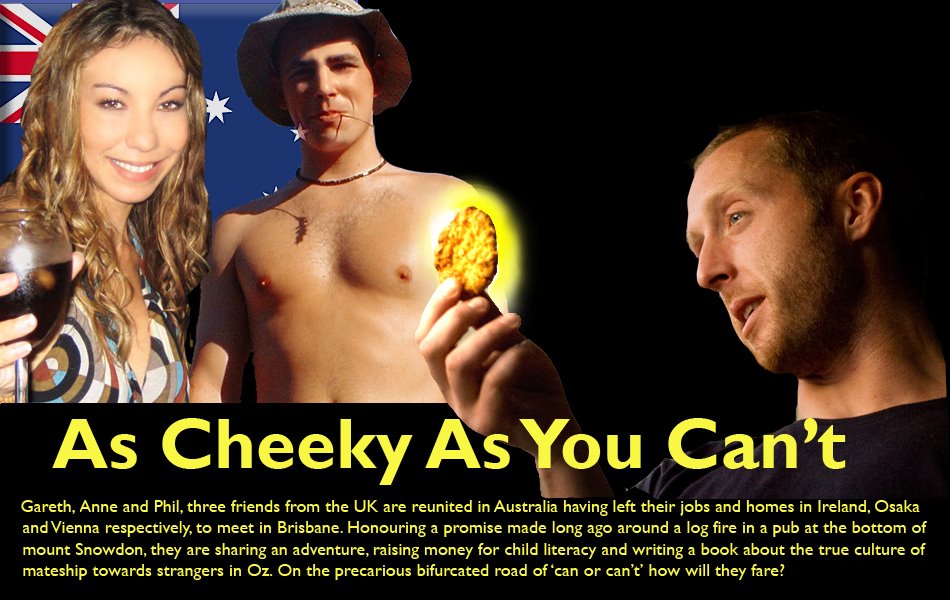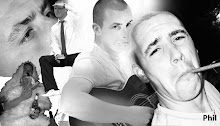 A dugong (seacow) is special to Aboriginal People It was now time to throw a boomerang. Boomerangs were originally used for hunting, although those used for pursuing animals were not designed to come back, after all, if it comes back, then it means you haven't hit anything on route, and that means no barbi. The guide demonstrated the finer art of boomerang throwing as we looked on, watching each and every boomerang land in the palm of his hand. It was now our turn, each person on the tour was encouraged to have a go, young and old alike trying to recreate the perfect throw. All three of us got reasonably close but didn’t manage to catch it, we can now appreciate just how skillful an art it is. Surprisingly, unlike a Frisbee you don't do an under arm release but instead do an overarm fling at a 45 degree angle. Although we did well for our first try (video to come shortly), we had little chance of catching any meat with our throws. So, it looks like all you little birdies are safe for now. You're in more danger when Gareth has been eating a cabbage dinner, letting off gale force parp gusts capable of sending all surrounding flaming galas, willy-wag tails and kookaburras spiralling to the ground, than when we are armed with these most famous of Aboriginal tools.
A dugong (seacow) is special to Aboriginal People It was now time to throw a boomerang. Boomerangs were originally used for hunting, although those used for pursuing animals were not designed to come back, after all, if it comes back, then it means you haven't hit anything on route, and that means no barbi. The guide demonstrated the finer art of boomerang throwing as we looked on, watching each and every boomerang land in the palm of his hand. It was now our turn, each person on the tour was encouraged to have a go, young and old alike trying to recreate the perfect throw. All three of us got reasonably close but didn’t manage to catch it, we can now appreciate just how skillful an art it is. Surprisingly, unlike a Frisbee you don't do an under arm release but instead do an overarm fling at a 45 degree angle. Although we did well for our first try (video to come shortly), we had little chance of catching any meat with our throws. So, it looks like all you little birdies are safe for now. You're in more danger when Gareth has been eating a cabbage dinner, letting off gale force parp gusts capable of sending all surrounding flaming galas, willy-wag tails and kookaburras spiralling to the ground, than when we are armed with these most famous of Aboriginal tools. 
While staying in Cobraball, Leah Grice organised for us to visit the Dreamtime Cultural Centre just down the road in Rockhampton. The centre was opened over 20 years ago and was initially used as a way for Aboriginal elders to pass on their knowledge to the young. Out of that grew the cultural centre as it is today and the Rockhampton City Council have now entered into an agreement with the Central Queensland Aboriginal Corporation to provide a long term tenure for the centre.
It is recognised that the original occupants of the land were the Darambal Tribe and the site still contains the tribe’s traditional ceremonial rings. This area is part of the Central Queensland Sandstone Belt and there is a display at the centre focusing on the vanishing culture of this area. The recreated sandstone caves show some of the rock art and early mythology of the region as well as portraying the traditional people of the area and sites of particular significance.

In the Torres Straight Islander Village a tour guide from the region explains the traditional lifestyle and beliefs of their unique culture. This takes place in an original Dugong complex which displays some of the artifacts and building materials used by the Islanders.
The tour then moved on to a large stone cave where we were given a demonstration of the Didgeridoo. The range of sounds and the different beats and volumes produced was phenomenal and the different techniques for making and changing the sound were explained. The cave was the perfect setting not just acoustically but also adding to the atmosphere. The deep, sonorous under growls of the bass coupled with the throaty vocals pushed on with circular breathing seemly impossible to all those who don't dedicate a good few decades mastering their diaphragms echoed with the excellent mood producing acoustics of the natural oubliette we were sitting in. Sun seeping in through the oculus, making a natural spot light for our performer, the cooling properties of the cave creating a cool sanctuary from the glaring heat of the day.
It is also possible whilst there to wander around the gardens, where particular native plants have information boards next to them describing there uses for food, medicine or hunting and building materials. The sporting person’s art gallery also depicts successful aboriginal sports people.

For more information and opening times please visit the Aboriginal Dreamtime Centre webpage






















2 comments:
anne, this reminded me that i only know the word "oubliette" through you.
Thank youu for writing this
Post a Comment